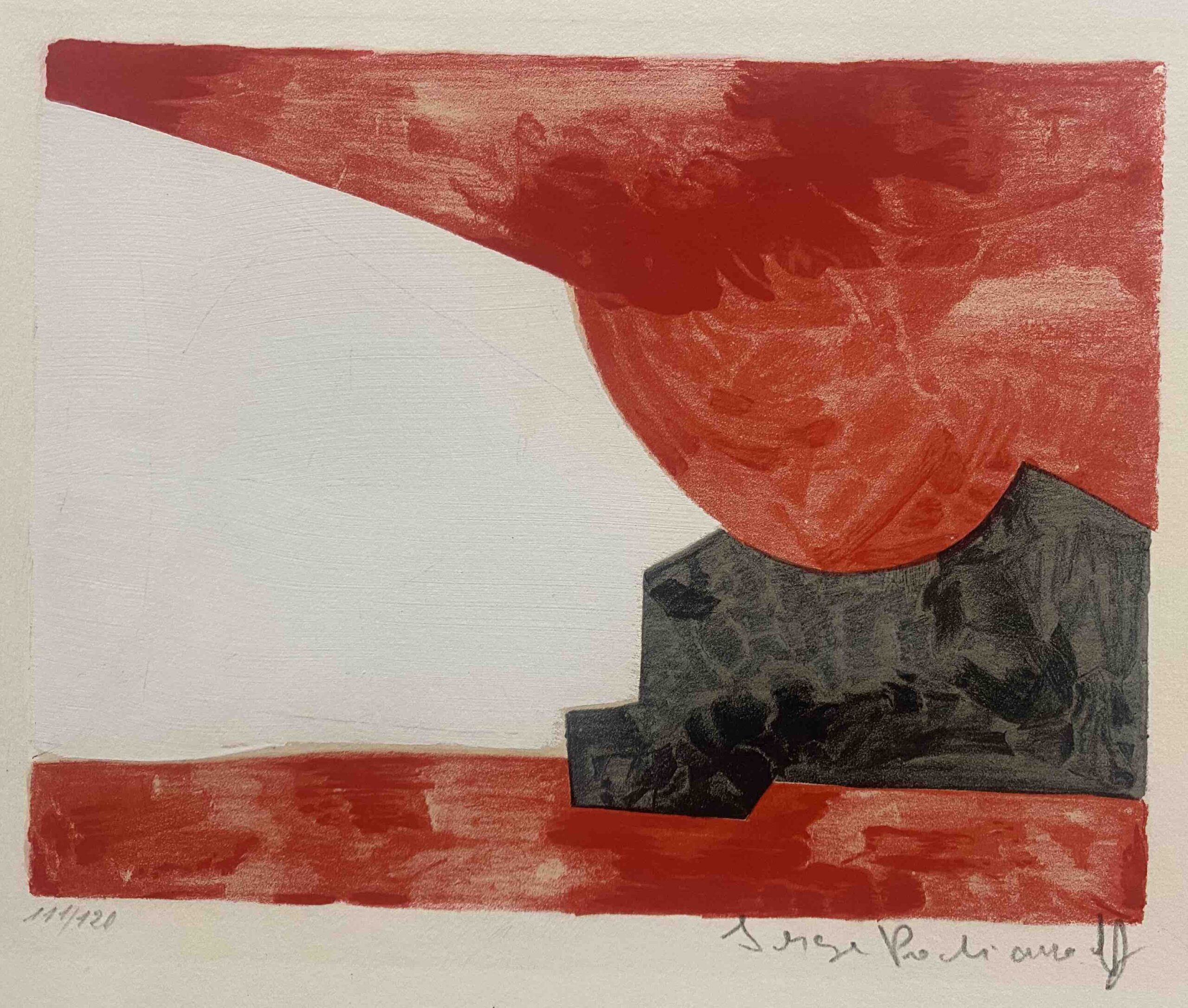Biography
Serge Poliakoff was a French painter with Russian roots. He is considered an important representative of the Nouvelle École de Paris.
He attended painting courses in Moscow from 1914. However, the revolution in 1917 was to shake this life deeply and put an end to the studies and this first phase of Serge Poliakoff’s life. In 1920 the situation in Moscow became very critical. Georg Poliakoff decided to send his two youngest children, Serge and his sister Sophie, with their mother to the country, where they were to be accommodated by a former servant. But he had not reckoned with the plans of his son. He had secretly decided to leave Russia and carefully planned his escape.
He took advantage of the change at a railway station and informed his sister of his intentions; he asked her not to tell his mother – whom he was never to see again – so as not to be hindered in his plans, and disappeared. He tried to reach the White Army during the night, and finally arrived in Kiev after a dramatic train journey where he hid under a coal wagon. Further favorable turns followed, through which he managed to make his way to his uncle Dimitri.
Together they crossed the Caucasus, lived in Tbilisi for some time and were able to earn a living with their musical talents. In Georgia, where his aunt Nastia, a singer, joined them, they finally managed to embark on a ship to Constantinople. Via Sofia, Belgrade, Vienna and Berlin, Poliakoff finally reached Paris in 1923, where he was to spend all but a few years of his life.
In Paris he began intensive studies of painting. From 1923 to 1951 he earned his living as a musician, including playing the guitar in Russian cabarets. From 1929 on he was enrolled at the Académie Frochot in Paris and the Académie de la Grande Chaumière. In 1935 he went to London for two years and attended first the Chelsea School of Art, then the Slade School of Art.
At first Poliakoff varied the academic traditions and preferred representational motifs such as nudes, houses, trees and the like. After 1935 he gradually found his way to abstraction and used color as a color without figurative references. He was decisively influenced in this direction by Kandinsky, whom he met on his return to Paris.
Through Sonia and Robert Delaunay he learned to appreciate the emotive quality of color, and his interest in simultaneous contrasts was awakened. The sculptor Otto Freundlich also exerted a decisive influence on Poliakoff’s pictorial language with his curved colour form compositions. Poliakoff developed a very individual form of abstract painting which juxtaposes colourful areas of colour. In the 1940s he remained in the grey-brown colour range, later, from 1950 onwards, he extended his scale to include bright, contrasting tones.
In his late work he reduced the strong polychromy to earthy nuances and showed a tendency towards monochrome design.
